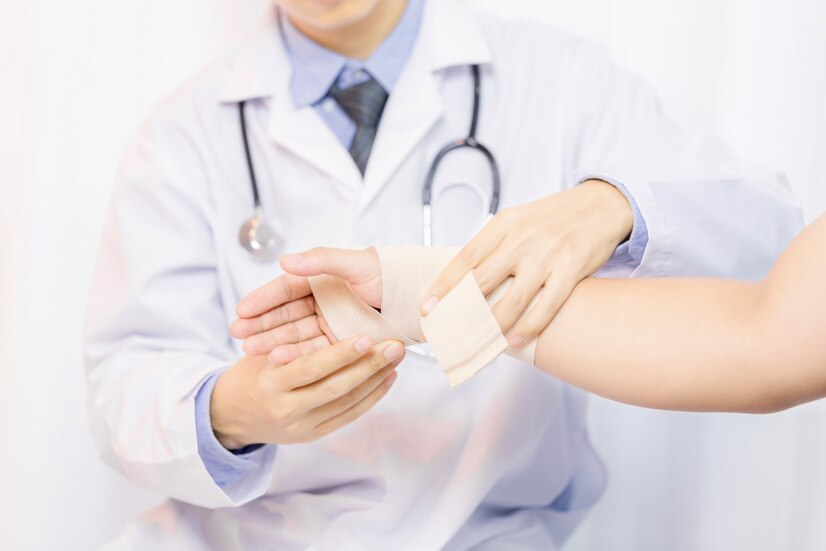Wound healing is a complex process that involves a series of events orchestrated by the body to repair damaged tissue. At the forefront of this intricate dance of cellular and molecular interactions are growth factors, signaling molecules that play a pivotal role in regulating the various phases of wound healing. In this article, we delve into the fascinating world of growth factors and explore their indispensable contribution to the healing process.
Understanding Wound Healing Phases
Before we delve into the specifics of growth factors, it’s essential to grasp the fundamental phases of wound healing. The process can be broadly categorized into three main phases: inflammation, proliferation, and remodeling.
- Inflammation: The First Line of Defense
The journey of wound healing kicks off with inflammation, a crucial response aimed at clearing debris, preventing infection, and initiating the repair process. During this phase, growth factors such as tumor necrosis factor-alpha (TNF-α) and interleukins come into play. These signaling molecules coordinate immune responses, attracting white blood cells to the injury site and promoting the removal of damaged tissue.
- Proliferation: Rebuilding the Foundation
As the inflammatory phase subsides, the proliferation phase takes center stage. This stage is characterized by the activation and proliferation of various cell types, including fibroblasts, endothelial cells, and keratinocytes. Growth factors like transforming growth factor-beta (TGF-β) and platelet-derived growth factor (PDGF) are crucial in stimulating cell migration, proliferation, and the synthesis of extracellular matrix components. This orchestrated effort aims to rebuild the tissue and establish a provisional matrix for subsequent repair.
- Remodeling: Fine-Tuning for Resilience
The final phase of wound healing is remodeling, where the newly formed tissue undergoes refinement and maturation. Collagen, the structural protein providing tensile strength to the tissue, is rearranged and cross-linked during this phase. Growth factors, such as insulin-like growth factor (IGF) and epidermal growth factor (EGF), contribute to this process by modulating collagen synthesis and ensuring the proper extracellular matrix organization.
The Orchestra of Growth Factors
Now that we’ve outlined the fundamental phases of wound healing let’s zoom in on the specific growth factors that act as conductors in this cellular orchestra.
- TGF-β: Orchestrating Proliferation and Differentiation
Transforming growth factor-beta (TGF-β) is a key player in wound healing, influencing various aspects of the process. It promotes the migration and proliferation of fibroblasts, which are crucial for synthesizing collagen and other extracellular matrix components. Moreover, TGF-β regulates the differentiation of fibroblasts into myofibroblasts, cells that play a pivotal role in wound contraction, a vital step in closing the wound.
- PDGF: Stimulating Cellular Recruitment
Platelet-derived growth factor (PDGF) takes the spotlight during the early stages of wound healing. Released by platelets and macrophages, PDGF attracts fibroblasts and promotes their proliferation and migration to the site of injury. This not only aids in the synthesis of extracellular matrix components but also enhances angiogenesis, ensuring an adequate blood supply to the healing tissue.
- EGF: Nurturing Epithelialization
Epidermal growth factor (EGF) promotes epithelial cell migration and proliferation. This is particularly vital for the re-epithelialization phase of wound healing, where the epithelial layer is restored to cover the wound surface. EGF accelerates this process, ensuring the wound is sealed and protected from potential infections.
- IGF: Balancing Growth and Differentiation
Insulin-like growth factor (IGF) contributes to wound healing by balancing cellular growth and differentiation. It stimulates the synthesis of collagen and other extracellular matrix components while promoting the differentiation of various cell types involved in tissue repair. This dual role makes IGF critical in achieving the delicate balance required for effective wound healing.
Challenges in Wound Healing: The Healing-Infected Dilemma
While growth factors are paramount in promoting wound healing, the process is not without challenges. One of the significant hurdles is the potential for infections to impede the healing trajectory. In infected wounds, the delicate balance of growth factor signaling can be disrupted, leading to prolonged inflammation and impaired tissue repair.
To address the healing or infected dilemma, a comprehensive approach is required. This involves not only the administration of growth factors to stimulate the healing process but also effective infection control measures. Antibiotics, wound debridement, and other strategies aimed at mitigating infection become crucial components of the overall treatment plan.
Moreover, research is ongoing to explore innovative approaches, such as developing growth factor-loaded biomaterials that can provide sustained release at the wound site. These advancements aim to enhance the effectiveness of growth factor therapy while minimizing the risk of infections.
Nurturing the Symphony of Healing
Growth factors emerge as indispensable players in the symphony of wound healing. From orchestrating inflammation to promoting cell proliferation and guiding tissue remodeling, these signaling molecules dictate the pace and precision of the healing process. However, the challenge lies in navigating the healing-infected dilemma, where infections can disrupt this delicate dance.

